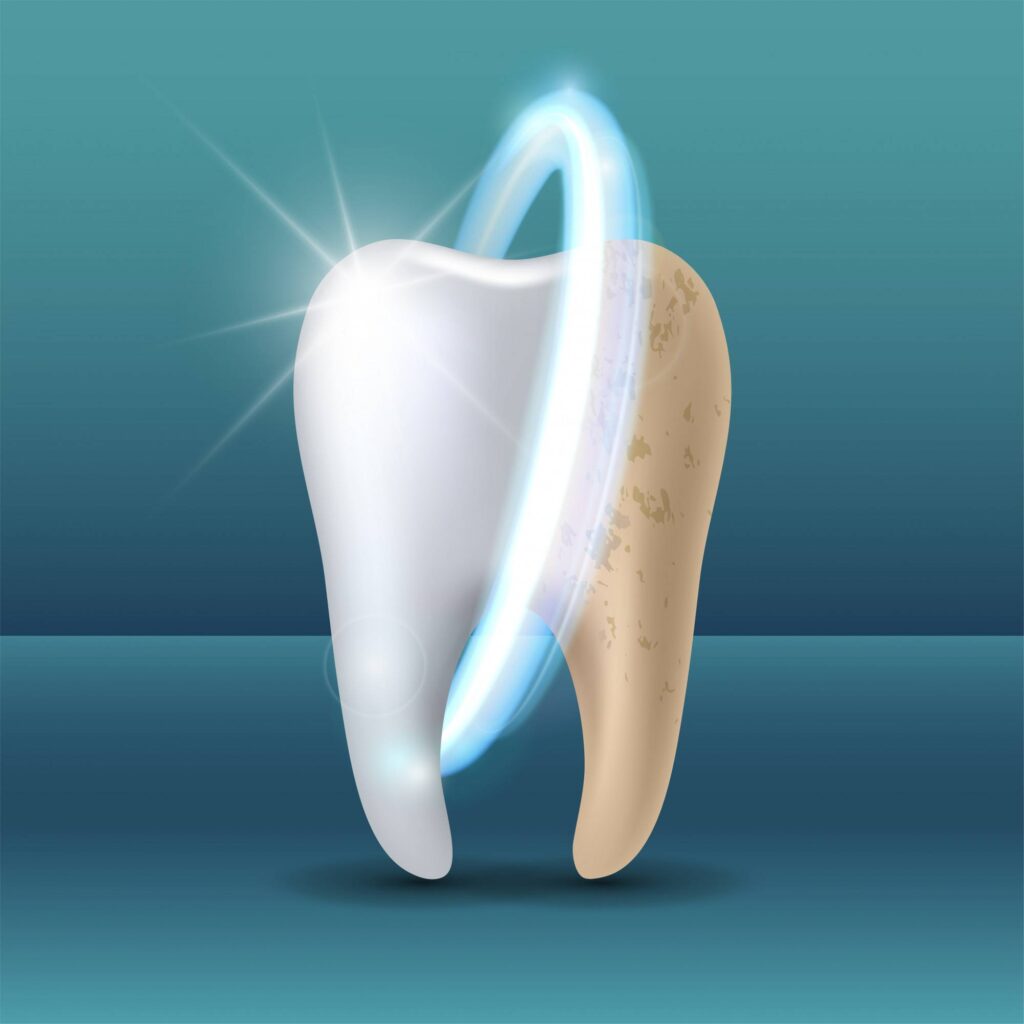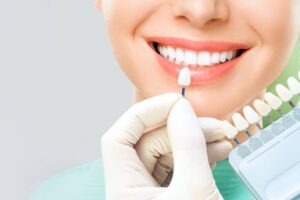Last Updated on 2 years ago by Nicky Johnson
Everyone desires a brighter, whiter smile, but teeth discoloration is common and can happen for several reasons. One method is to opt for a whitening service. However, many people fear that a whitening procedure damages the enamel. But this is not true.
Teeth whitening done by a professional is a simple and practical approach to removing stains. There may be some harmless side effects, but the whitening procedure is safe and does not harm the enamel. A dentist will ensure that you have the best services with the utmost care for your teeth.

What Is Tooth Enamel?
Blog Contents
Enamel is one of the strongest tissues in the body. You will be surprised to know that it is more vital than bones. Enamel covers the dentin, the most sensitive part of the tooth. Enamel protects the teeth from bacteria and acid when drinking or eating something. Enamel serves as a barrier between your teeth and the outside environment.
The acid in food and drinks is the principal cause of tooth enamel erosion. Saliva is the defense for these acids because it neutralizes the acid and protects your enamel. However, your enamel can be damaged if you overeat acidic food and don’t brush your teeth correctly. But there is no relation between teeth whitening and damaging the enamel. It is a safe dental procedure.
Why Do Teeth Become Discolored?
Teeth yellowing can also be caused by poor dental hygiene or certain medicines. A variety of other factors can cause teeth discoloration. They are mainly divided into two categories: Extrinsic stain and Intrinsic stain.
- Extrinsic stains – Extrinsic stain is the discoloration of teeth caused by external factors, such as smoking, drinking coffee or tea, and so on. These stains only affect the outside surfaces. Extrinsic discoloration can be treated easily. For example, it’s simple to treat using whitening toothpaste.
- Intrinsic Stains – Intrinsic stain refers to staining that occurs within the tooth. It is caused by drugs, aging, and dental trauma. To restore that tooth brightness, you must get your teeth professionally bleached to eliminate the intrinsic stains.
The Best Method Of Whitening
Whitening can be accomplished in one of two ways. The first option is to visit a dentist, while the second is to use an over-the-counter remedy. However, seeing a specialist for proper treatment is the safest option. Professional services will determine whether or not there are any underlying difficulties. Additionally, professional cleaning will provide an outstanding brightness without causing any harm to your teeth. When you hire professionals, you can be assured that they will only use the safest products.
Possible Side-effects
Whitening is one of the safest methods. However, you might feel some side effects, but there is nothing to worry about because they subside with time.
- Teeth sensitivity: After you have gone through whitening of the teeth, you might feel some tooth sensitivity. It will, however, fade away gradually. Your doctor might also prescribe you some gel to deal with the sensitivity.
- Gum irritation: This is also a common side-effect, but there is nothing to worry about, as it also goes away. This irritation usually happens due to the contact of the whitening products with the gums.
Conclusion
To summarize, whitening is a safe procedure for teeth that do not harm the enamel. You must remember that after you’ve completed the whitening treatment, you must maintain appropriate oral hygiene to reduce the likelihood of plaque formation. Also, if you face frequent tooth discoloration, it is best to do a professional cleaning and not resort to DIY techniques.







